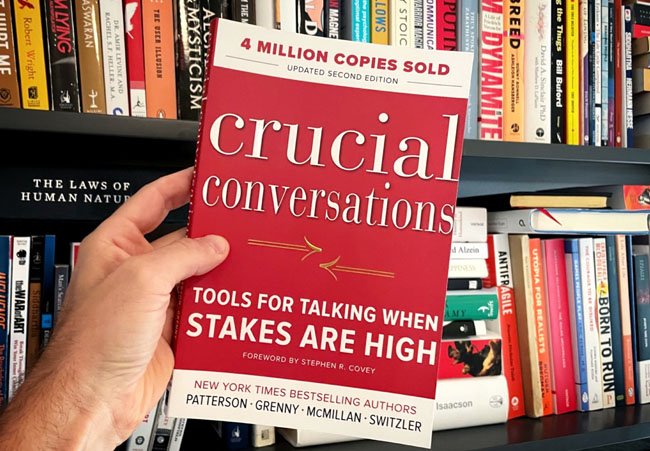10 Tips to Facilitate Team Alignment
The book "Crucial Conversations" is about how to have what they call “high-stakes” conversations—those where emotions run high. In business, that’s almost anything that impacts the bottom line. Or when individuals feel they have something personal to win or lose—like status, accolades, experience, or even safety.
According to the authors, one key to successfully navigating tough conversations is to get all the information on the table as soon as possible:
"When two or more people enter a crucial conversation, we build a pool of shared meaning—the more we add of each person's meaning the more information is available to everyone involved and the better the decisions made."
The goal is to provide space to say what is typically left unsaid so the group can respond together in real-time and with context.
For growing teams, things are often left unsaid because there isn’t time to say them, or it isn't the priority for everyone at the same time.
A core piece of my work is to facilitate creating pools of shared meaning around what and how a team communicates about their work.
It is the precursor to developing brand and messaging strategy they’ll buy into.
On my LinkedIn post this week, I shared that sometimes we have to get in a room together to dig into issues that are sticky or nuanced.
It can feel easier to keep people siloed to their to-do lists while letting our emotions tell the story of what's happening.
But I will always advocate for cultivating shared meaning to get to the bottom of the problem and discover a path forward.
To that end, here are some tips I’ve learned about facilitating stakeholders toward alignment:
When gathering, be clear about the purpose of the time together. Define, or even co-create, what success looks like for the effort. What does everyone need to get out of it?
Set the guidelines or ground rules. Explain how you will keep the group on track. Acknowledge any situational elephants in the room (“I know we haven’t tried doing it this way before and it may feel a little awkward…”), and bring up the concept of bias early in the conversation if relevant.
Create a “parking lot” to write down ideas that are off-topic but important. Let people know their idea or question has been captured.
Provide a variety of methods to gather responses so all voices have a chance to be heard.
To make sure people have time to develop their own thoughts, it can be helpful to give time to respond to writing prompts independently before group sharing. Sticky notes are helpful for this, too.
Vary the tempo of the exercises you use: collect some rapid-fire responses, set up times to go deeper in smaller groups, etc.
Encourage storytelling to illustrate complex or important ideas. “Do you have a story about a time that happened?” “Help me understand: do you have a specific example you’re thinking about?”
Allow people time to process information; lots of people need to sit with things to contribute their best thinking. I like to break up my positioning workshops over two days so there’s time to sit with what we’re uncovering.
Be clear about how, when, and what kind of additional feedback is requested.
End with gratitude and let them know what will happen next with the information they shared.
When it comes to brand strategy and messaging, I find that teams are typically more aligned than they're not. The work of figuring that out builds trust, opens paths of communication, and inspires them to work toward solutions together.
Hi, I’m Erin Braford. I help expert-led companies position their brand as a premium service with clear and compelling messaging, marketing, and sales stories. Click around and then contact me you’re ready to learn more.


